Lab Volcano Facilities
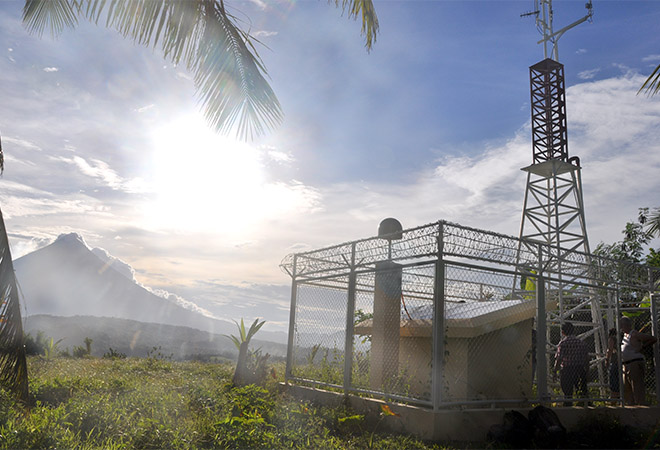
A station on the summit of Marapi volcano, Indonesia in 2019 (Source: Wong Siow Kay)
The purpose of the Lab Volcanoes is to understand the timing, rates and other details of the magma supply of different volcanoes, in order to improve forecasts of future eruptions. To this end, laboratory volcanoes display very diverse monitoring tools that provide a constant flow of data.
EOS has developed volcano laboratories at Mayon (Southeast Luzon, Philippines) and Gede-Salak (West Java, Indonesia). These volcanoes span a wide range of degassing behaviours: Mayon is an openly degassing volcano, while Gede and Salak exhibit only minor degassing. The nuances on the degassing spectrum displayed by these volcanoes make them very valuable for fundamental research.
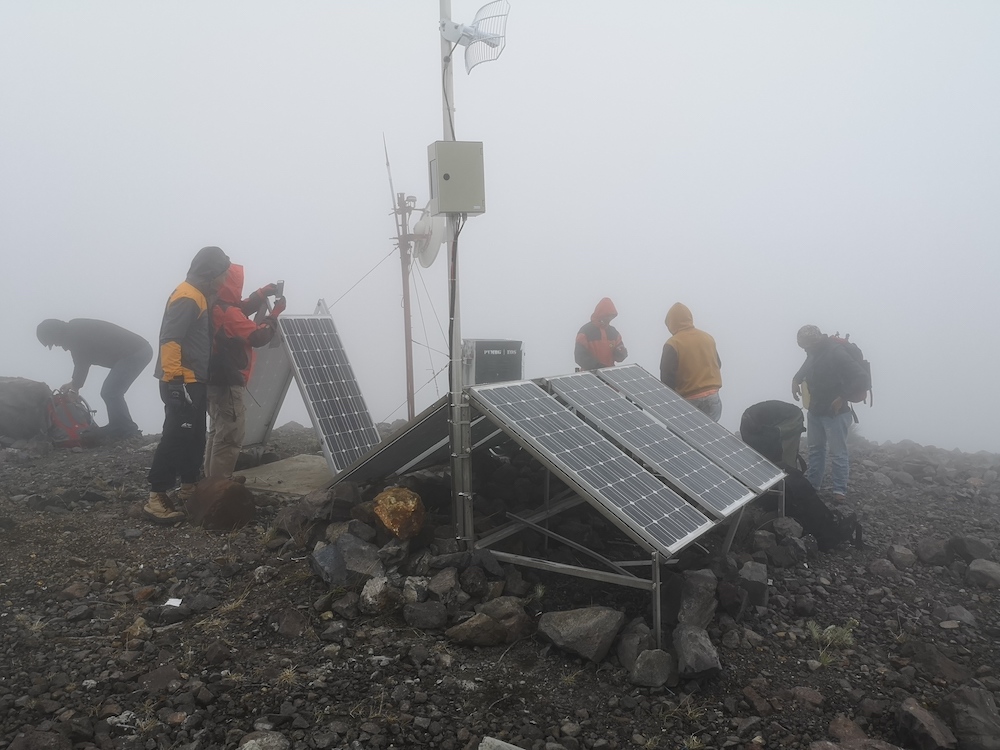
CGO staff and Philippine collaborator working on a station near Mayon volcano, Philippines in 2019 (Source: Wong Siow Kay)
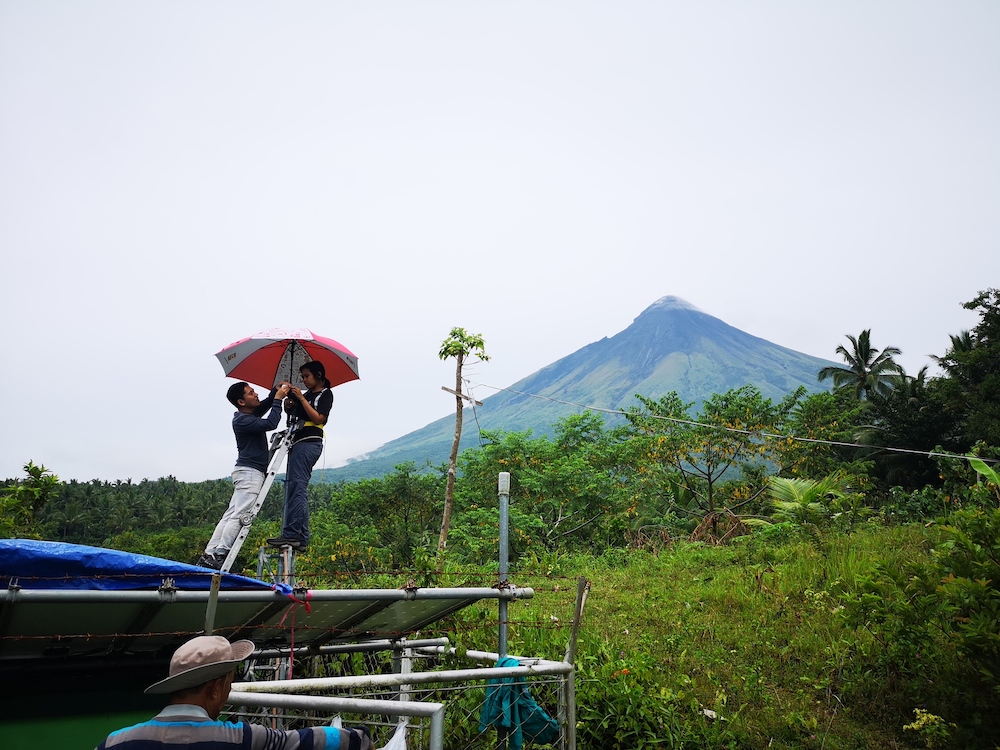
CGO staff and Philippine collaborator working on a station near Mayon volcano, Philippines in 2019 (Source: Wong Siow Kay)
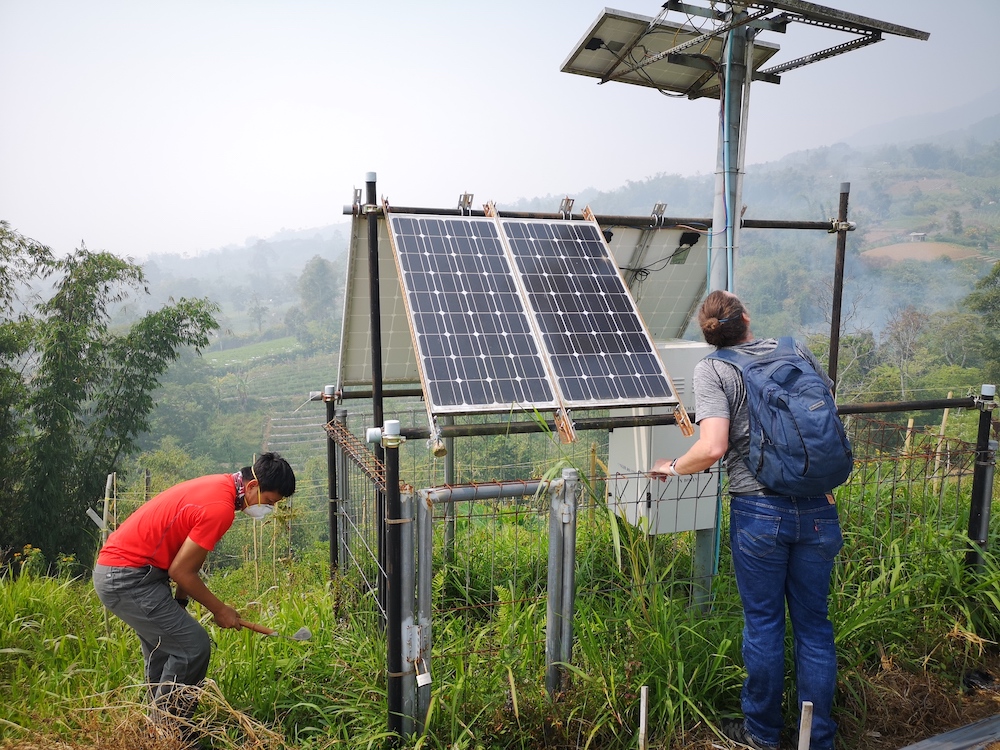
CGO staff in Marapi on a maintenance field trip, 2019 (Source: Wong Siow Kay)
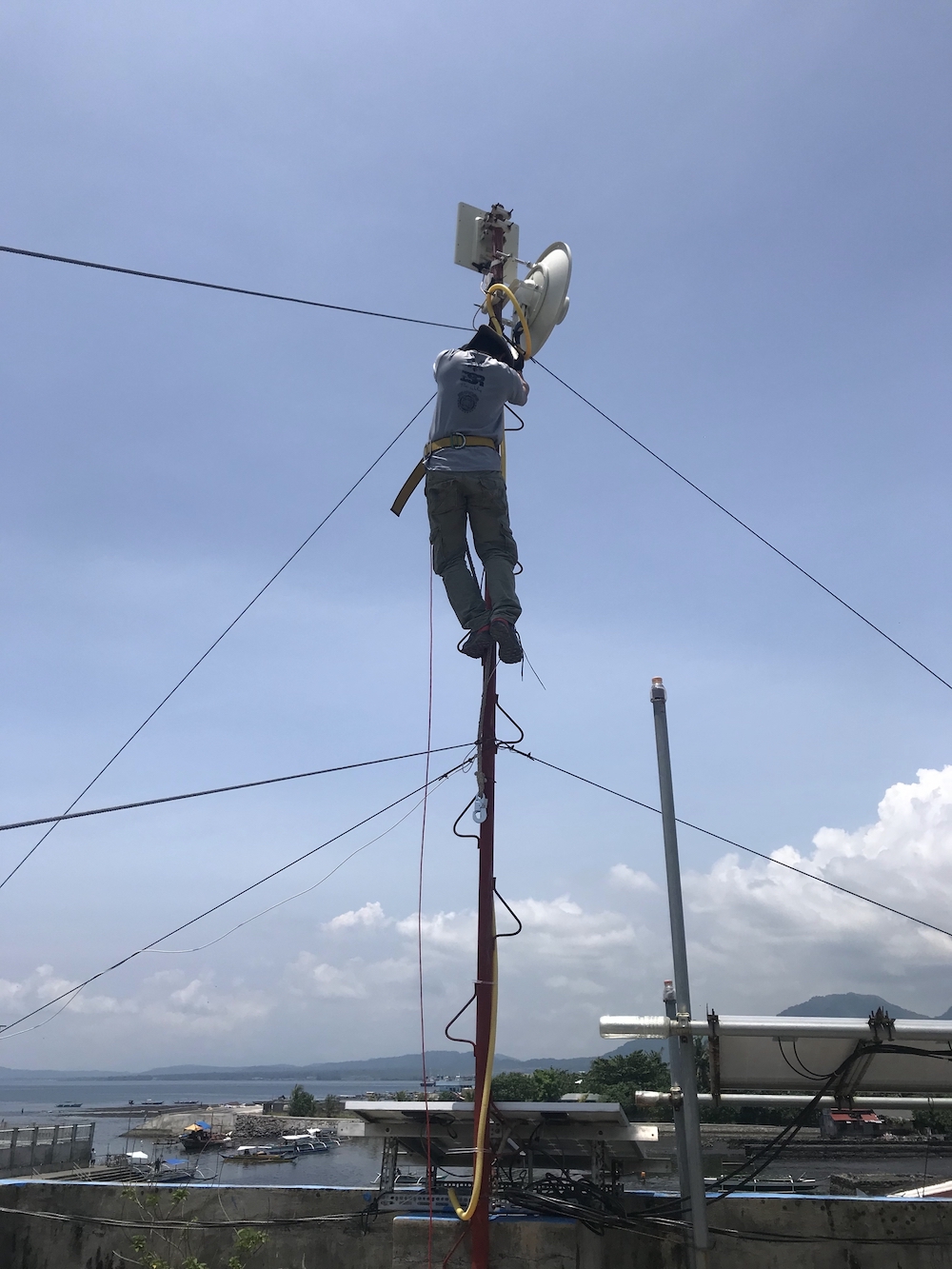
Jeffrey Encillo working on a radio system in Legazpi, Philippines in 2019 (Source: Chulalak Sundod)

A seismic station for the study of volcanoes
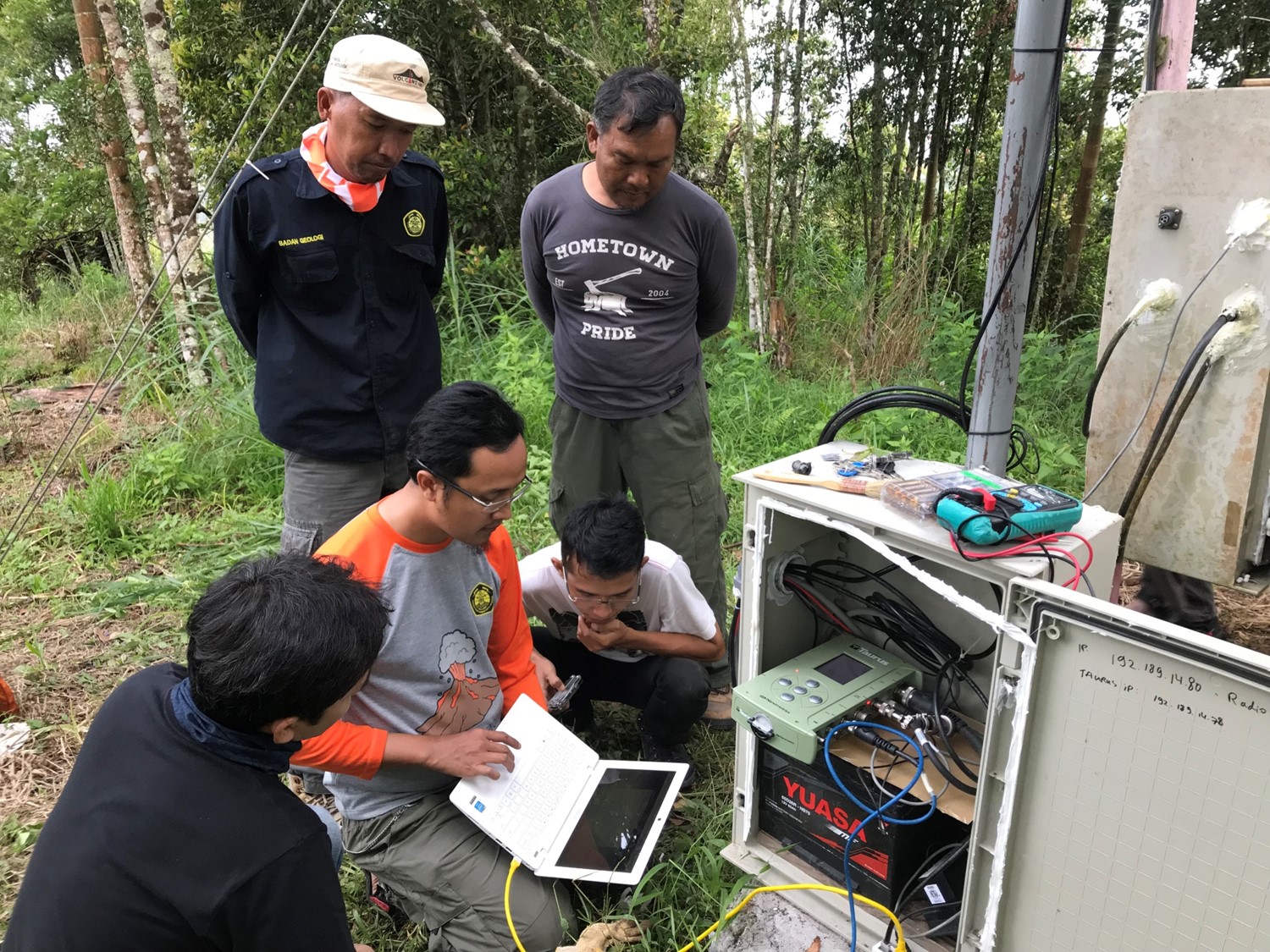
Collaborators from Indonesia’s Center for Volcanology and Hazard Mitigation led by CGO’s Dr Dannie Hidayat downloading data from the volcano monitoring station at Mount Marapi, West Sumatra (Source: Juniator Tulius)

CGO’s Dr Dannie Hidayat and Indonesian collaborators of CVGHM in yearly maintenance of West Sumatra volcano monitoring stations in 2018 (Source: Juniator Tulius)

Summit of Marapi volcano, 2018 (Source: Leong Choon Yew)
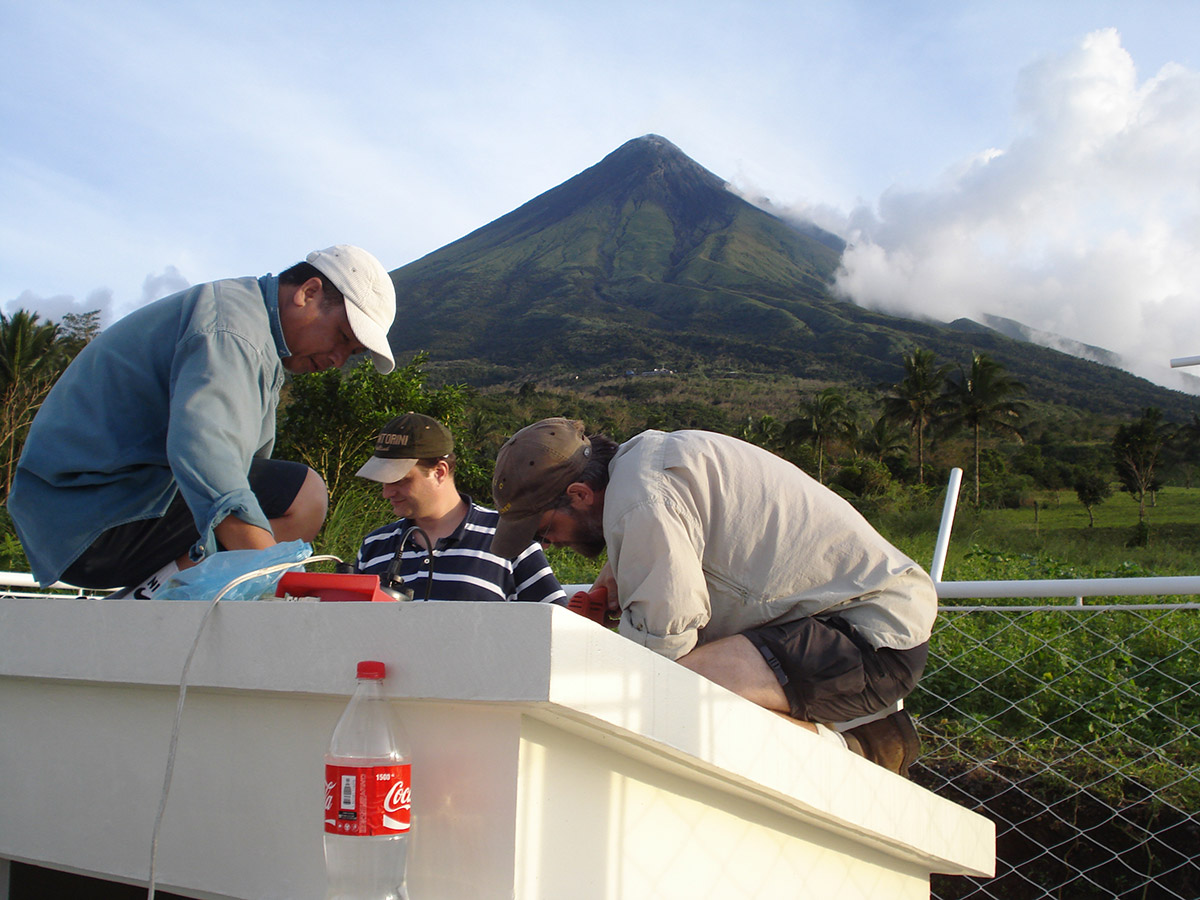
Solar panel installation, Mayon Volcano (Source: Dannie Hidayat)
Gede-Salak Volcano Observation Network
- 4 broadband seismic stations
- 7 short-period seismic stations (6 EOS, 1 CVGHM)
- 4 tiltmeters, co-located with seismic stations
- 4 cGPS sites
- 1 instrument for multigas
- All necessary telemetry connections to the observatory post of Gede and Salak via radio telemetry (9 stations) via 6 repeater statins and cellular telemetry (2 stations). Data are then accessible at EOS and CVGHM Bandung via the internet.
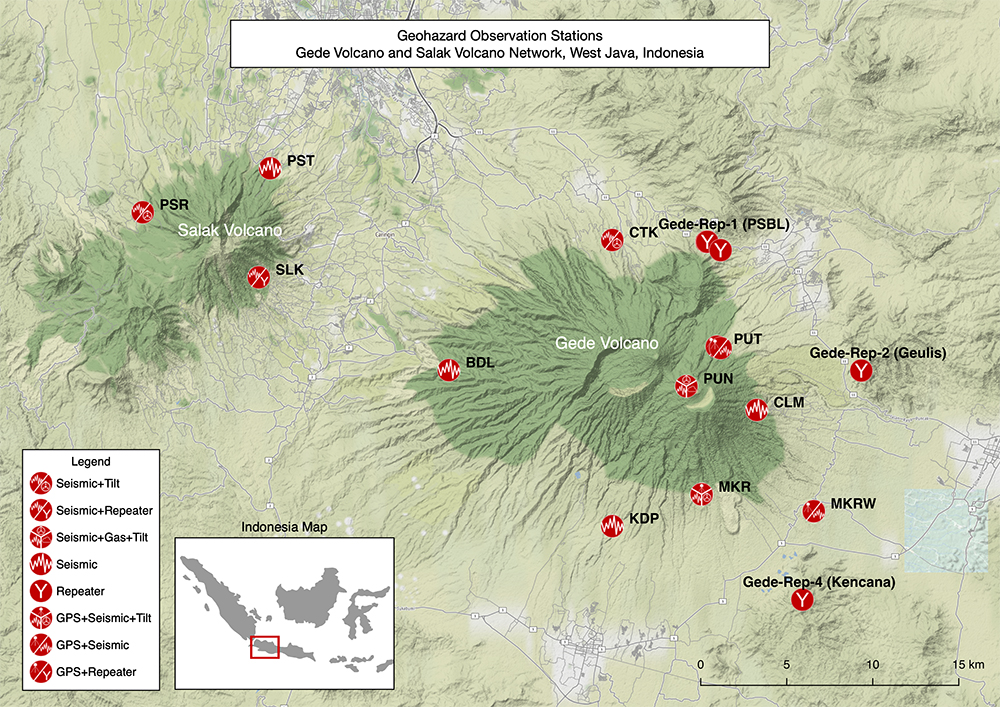
Mayon Volcano Observation Network
(PHIVOLCS instruments)
- 5 tiltmeters (EOS-PHIVOLCS)
- 4 cGPS (EOS)
- 7 broadband seismographs (4 EOS, 3 PHIVOLCS)
- 1 barograph (PHIVOLCS)
- 3 scanning mDOAS (EOS)
- 3 CO2 gas boxes (EOS)
- 3 heat flux sensors (EOS)
- 5 met stations (EOS)
- 2 well monitors (h, T, pH; EOS)
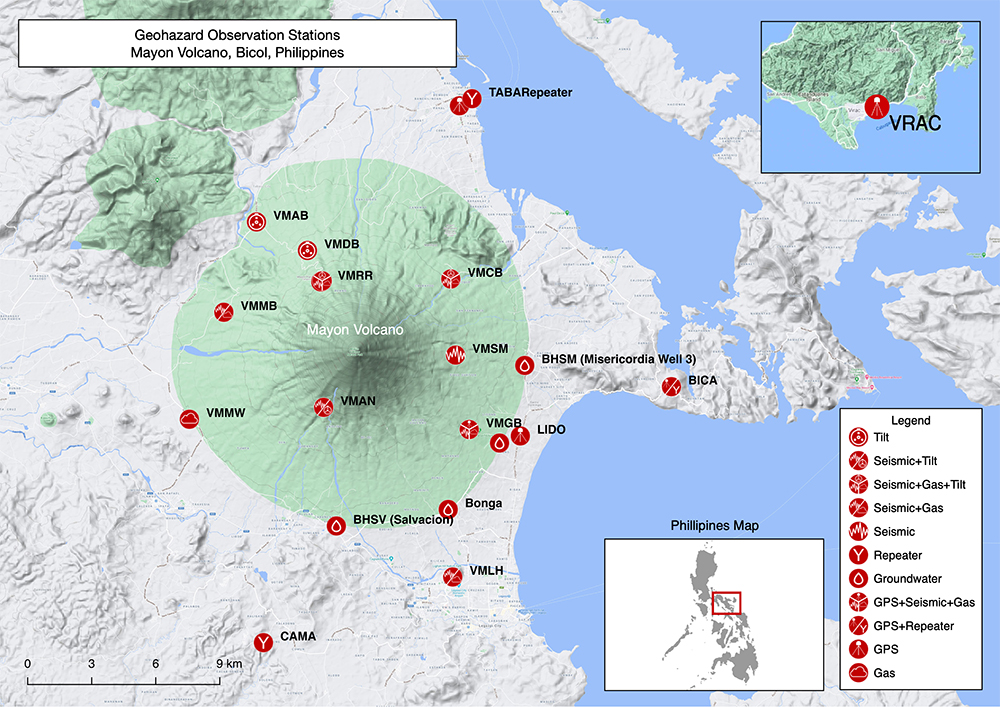
Marapi Volcano Observation Network
- 5 collocated infrasound & broadband seismic stations
- 4 short-period seismic stations (1 EOS, 3 CVGHM)
- 3 tiltmeters, co-located with seismic stations
- 2 telemetry repeater stations. Data are then accessible at EOS and CVGHM Bandung via the internet.
